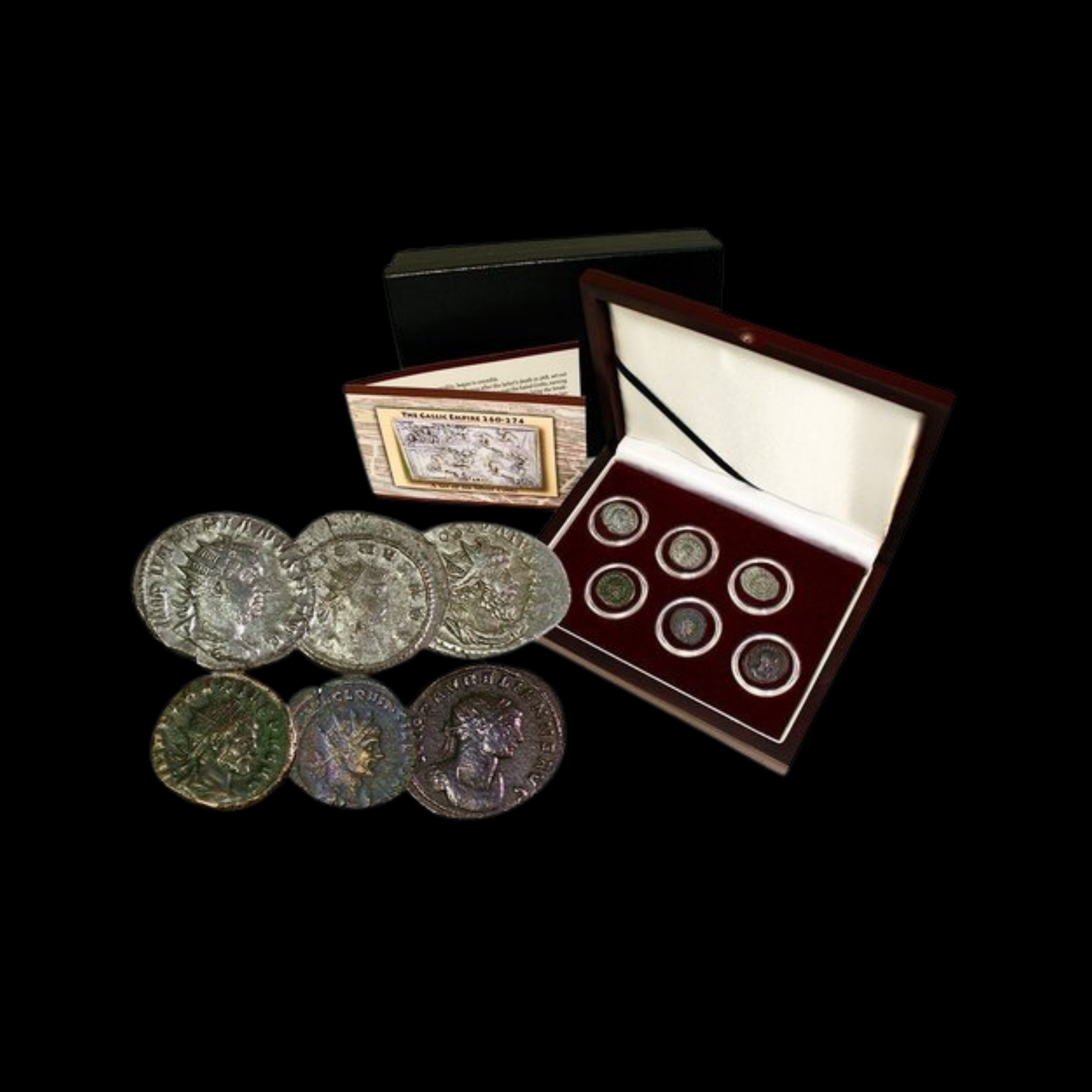 Image 1 of 3
Image 1 of 3

 Image 2 of 3
Image 2 of 3

 Image 3 of 3
Image 3 of 3




Ancient Silver Denarius from the Roman Empire: Antoninus Pius, Rome Mint (about 1,860 years ago)
This silver denarius was struck in Rome between AD 138 and 161 under the reign of Antoninus Pius, one of the "Five Good Emperors" of Rome. Adopted by Hadrian and known for his peaceful and prosperous administration, Antoninus ruled for over two decades without major wars—rare for any Roman emperor. His coinage reflects stability, traditional Roman values, and the continuation of imperial legitimacy during a golden era of the Empire.
Coin Description
Front side (Obverse):
Laureate bust of Antoninus Pius facing right
Calm, composed expression with neatly trimmed beard and hair
Surrounded by inscriptions of his full imperial title (e.g., “ANTONINVS AVG PIVS P P TR P COS III”)
A portrait of imperial dignity, emphasizing order and continuity
Back side (Reverse):
Common reverse types include Libertas, Pax, Annona, or Fortuna standing with attributes
Imagery often features cornucopiae, rudders, wheat ears, or sacrificial implements
Designed to emphasize themes like peace, abundance, and divine favor
Balanced and restrained design typical of mid-2nd century imperial style
Technical Details
Composition: Silver (AR)
Denomination & Weight: Denarius; ~3.0–3.6 grams
Mint & Date: Rome Mint, AD 138–161
References: RIC III 1–500 (varies by type); BMCRE 1–430; Cohen listings by deity type
Certification: NGC-certified
Encapsulated with authentication and grading details (e.g., “VF,” “Strike 4/5, Surface 4/5”)
Guaranteed authenticity and professional conservation
Historical Significance
Coins of Antoninus Pius embody the height of Roman imperial administration and the ideological promotion of peace through strength. His reign was marked by internal development, legal reform, and imperial philanthropy—all symbolized in the reassuring imagery of his coinage. Certified denarii like this one are highly collectible, both for their classical artistry and for their representation of a rare Roman emperor who ruled without bloodshed. A perfect example of Rome’s silver currency during one of its most refined and philosophical periods.
This silver denarius was struck in Rome between AD 138 and 161 under the reign of Antoninus Pius, one of the "Five Good Emperors" of Rome. Adopted by Hadrian and known for his peaceful and prosperous administration, Antoninus ruled for over two decades without major wars—rare for any Roman emperor. His coinage reflects stability, traditional Roman values, and the continuation of imperial legitimacy during a golden era of the Empire.
Coin Description
Front side (Obverse):
Laureate bust of Antoninus Pius facing right
Calm, composed expression with neatly trimmed beard and hair
Surrounded by inscriptions of his full imperial title (e.g., “ANTONINVS AVG PIVS P P TR P COS III”)
A portrait of imperial dignity, emphasizing order and continuity
Back side (Reverse):
Common reverse types include Libertas, Pax, Annona, or Fortuna standing with attributes
Imagery often features cornucopiae, rudders, wheat ears, or sacrificial implements
Designed to emphasize themes like peace, abundance, and divine favor
Balanced and restrained design typical of mid-2nd century imperial style
Technical Details
Composition: Silver (AR)
Denomination & Weight: Denarius; ~3.0–3.6 grams
Mint & Date: Rome Mint, AD 138–161
References: RIC III 1–500 (varies by type); BMCRE 1–430; Cohen listings by deity type
Certification: NGC-certified
Encapsulated with authentication and grading details (e.g., “VF,” “Strike 4/5, Surface 4/5”)
Guaranteed authenticity and professional conservation
Historical Significance
Coins of Antoninus Pius embody the height of Roman imperial administration and the ideological promotion of peace through strength. His reign was marked by internal development, legal reform, and imperial philanthropy—all symbolized in the reassuring imagery of his coinage. Certified denarii like this one are highly collectible, both for their classical artistry and for their representation of a rare Roman emperor who ruled without bloodshed. A perfect example of Rome’s silver currency during one of its most refined and philosophical periods.
This silver denarius was struck in Rome between AD 138 and 161 under the reign of Antoninus Pius, one of the "Five Good Emperors" of Rome. Adopted by Hadrian and known for his peaceful and prosperous administration, Antoninus ruled for over two decades without major wars—rare for any Roman emperor. His coinage reflects stability, traditional Roman values, and the continuation of imperial legitimacy during a golden era of the Empire.
Coin Description
Front side (Obverse):
Laureate bust of Antoninus Pius facing right
Calm, composed expression with neatly trimmed beard and hair
Surrounded by inscriptions of his full imperial title (e.g., “ANTONINVS AVG PIVS P P TR P COS III”)
A portrait of imperial dignity, emphasizing order and continuity
Back side (Reverse):
Common reverse types include Libertas, Pax, Annona, or Fortuna standing with attributes
Imagery often features cornucopiae, rudders, wheat ears, or sacrificial implements
Designed to emphasize themes like peace, abundance, and divine favor
Balanced and restrained design typical of mid-2nd century imperial style
Technical Details
Composition: Silver (AR)
Denomination & Weight: Denarius; ~3.0–3.6 grams
Mint & Date: Rome Mint, AD 138–161
References: RIC III 1–500 (varies by type); BMCRE 1–430; Cohen listings by deity type
Certification: NGC-certified
Encapsulated with authentication and grading details (e.g., “VF,” “Strike 4/5, Surface 4/5”)
Guaranteed authenticity and professional conservation
Historical Significance
Coins of Antoninus Pius embody the height of Roman imperial administration and the ideological promotion of peace through strength. His reign was marked by internal development, legal reform, and imperial philanthropy—all symbolized in the reassuring imagery of his coinage. Certified denarii like this one are highly collectible, both for their classical artistry and for their representation of a rare Roman emperor who ruled without bloodshed. A perfect example of Rome’s silver currency during one of its most refined and philosophical periods.























